SDGs Interviews: Talking Partnership with Edson Kodama

SARAYA is one of Japan’s leading companies that implement the United Nation’s Sustainable Development Goals (SDGs). This is the third chapter of SARAYA’s SDGs interview series telling the story of those behind SARAYA and how they are working to achieve these goals. In this edition, we spotlight Edson Akitoshi Kodama, general director of SARAYA México and director of business development of Latin America at the Global Operations Division. Here is his story, and his approach to SDG №17: Partnership.
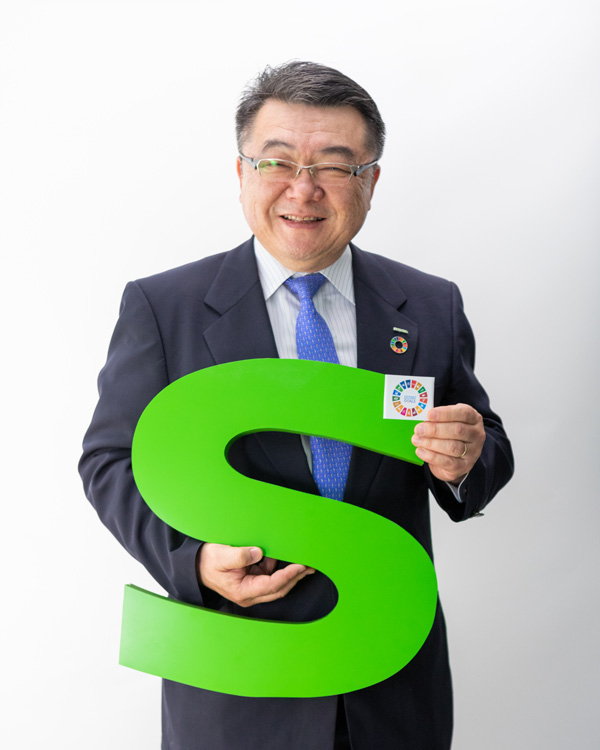 |
|
How did you come to work at SARAYA?
I have known Mr. Yusuke Saraya, the company president, since 1990 when we met at JCI (Junior Chamber International) World Congress in Puerto Rico, he as the JCI Executive Vice President and I the Director of Internationalism for JCI Brazil. He was very accessible, down-to-earth, and pleasant with everyone he spoke with, including me. Later, I went to work at the JCI World Headquarter and was appointed to be a liaison with JCI Japan (a country that always has a big presence in JCI) because I spoke Japanese, becoming also the director for the Americas and the Caribbean. I later became the director of Asia Pacific and thereafter Secretary-General. I always enjoyed communicating with Mr. Saraya throughout our time at JCI.
After I left JCI, he invited me to join his company, sharing his idea of expanding the business to Latin America. SARAYA promotes public hygiene and I remember seeing the logo, the soap, and disinfectant dispensers everywhere in Japan. When I saw their world map with all the subsidiaries around the world, I saw nothing below the USA. As a Brazilian, a Latin American, and a Japanese descendant, I felt I could bring something on the table to help SARAYA advance into a new frontier and make a difference in public hygiene with their sustainable business. So I joined in 2015.
What did you do before joining SARAYA?
I am a Japanese Brazilian from São Paulo, Brazil. My grandparents immigrated to Brazil from Kagoshima, Japan in 1932 aiming to make a small fortune and return to Japan within 5 years. Once they got to Brazil, they found out the reality was harsh, working on a plantation and never returning. My father grew up with no education. He worked on a coffee plantation starting from an early age and later moved to São Paulo with his brothers to work at an industrial laundry machine factory. Years later they started an industrial laundry machine maintenance business themselves and ran a small factory that is still running to this day. Because of their hard experience with no education, education became their first priority for our family as well as all other Japanese Brazilians, which is a bit more than 1% of the entire population of Brazil.
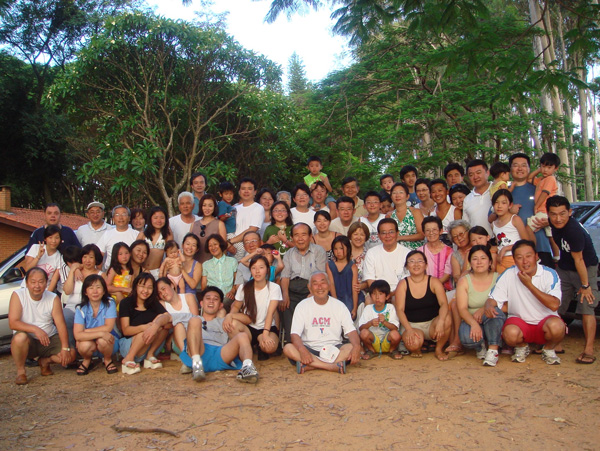 New year’s family reunion of the Kodama family in Brazil.
New year’s family reunion of the Kodama family in Brazil.
Although my father wanted me to inherit his laundry machine factory because I was his eldest son, I decided to pursue the career of an architect at age 12, working through the daytime and attending both high school and university at night. It took me 5 years to graduate from high school and 6 years from university. After I graduated from Mackenzie University with degrees in architecture and urbanism, I got a scholarship to study at Kagoshima University in Japan and became the first Kodama family member to return to our land of origin.
After university, I got a job at Nikken Sekkei, Ltd, one of the largest Japanese architectural project companies in Japan. I worked at their head office in Osaka and was part of a team that did many big projects including the Kansai International Airport. At the time, as I was about to transfer to their new firm in New York, I found out my father’s company was not doing well due to economic conditions in Brazil. I instead returned to Brazil and helped my father for about 2 years, and once the business was stable then started my own architectural company, the SEKKEI Arquitetos Associados Ltda. in São Paulo. Later on, I went back to Osaka to meet Mr. Kimiaki Minai, then the president of Nikken Sekkei, who granted my small company a technical support and cooperation agreement. Thanks to this partnership, we were able to win bids on some big projects.
You were Secretary-General of JCI before joining SARAYA. Could you talk about the JC (Junior Chamber) and the JCI?
When I was a student at Kagoshima University, I was invited to take part in an international cultural festival to organize a booth for Brazil, my home country. One of the festival organizers was JCI Kagoshima which I had never heard about at the time. After the festival, they invited me to some events to talk about Brazil, its culture, history, tradition, and the Japanese community in Brazil, the largest Japanese population outside of Japan. Years later, when I returned to Brazil and started my own business, I was invited to attend a presentation session at JCI Brazil-Japan in São Paulo. There I got reunited with several of my long-time friends and ended up joining the organization. The person who invited me to attend this event ended up becoming my wife.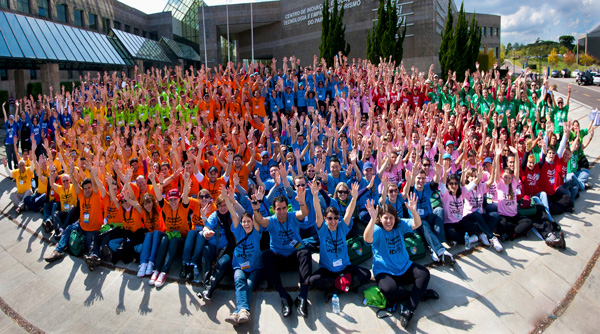 JCI UN MDG project - with volunteers from 36 countries around the world, most of them from Latin American countries.
JCI UN MDG project - with volunteers from 36 countries around the world, most of them from Latin American countries.
Could you explain what JC and JCI are?
JC stands for Junior Chamber. The organization was founded in St. Louis, Missouri, USA in 1915, and it’s a nonprofit organization of young active citizens age 18 to 40 who are engaged and committed to creating an impact in their communities. JCI gathers active citizens from all sectors of society to develop skills, knowledge, and understanding to make informed decisions, and to take action through projects and activities, being present in more than 5,000 communities in over 120 countries around the world.
On the other hand, JCI stands for Junior Chamber International, and it has different levels, from local, regional, national to international. I joined JCI in my hometown of São Paulo, becoming, after serving several positions, the president of JCI Brazil-Japan, then Vice President of JCI Brazil, a position of national level.
Joining JCI gave me a perspective on the world, learning the harsh realities of Latin America and Caribbean countries, as well as other parts of the world as I moved up in positions in the organization. I was allowed to represent the organization on different occasions in over 100 countries around the world and learned how to deal with community leaders, grassroots movement representatives with different backgrounds, cultures, religions, and traditions, as well as government officials and world organization leaders to discuss matters of common interests.
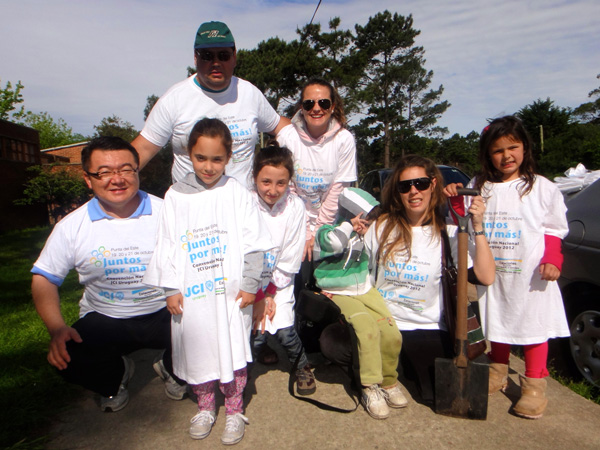 A community project in Montevideo, Uruguay.
A community project in Montevideo, Uruguay.
Do you have any memorable moments from that time?
In the early 1990s, when I was the JCI Director for the Americas and the Caribbean, I visited a small village in the countryside of Bolivia after hearing its high mortality rate by diarrhea among children below the age of 5, due to poor sanitation and hygiene conditions, with running water hardly available. Studying the situation I suggested the use of ORT (Oral Rehydration Therapy), a UNICEF method, to prevent the dehydration caused by diarrhea, that just needs to give the sick children glasses of clean water with a spoonful of salt, gathering a group of willing local young people and the local JCI chapter to address the problem.
We had PAHO (Pan American Health Organization) send us literature on the issue, but the majority of people in the village were illiterate, so there was no point in distributing fancy informative materials. Instead, we translated all the technical jargon and information in a way they could understand with the help of local young people since hygiene knowledge that may seem common in developed countries isn’t known in many places of the developing world.
We taught the young community members to conduct training sessions like a theatrical presentation, explaining and demonstrating how to boil water and let it cool before giving it to a child to drink, the importance of hand hygiene and how to wash your hands for the duration of happy birthday twice before rinsing, or concerning mothers, how to clean their breasts before breastfeeding their babies. In regard to the ORT method, we got the parents to give the purified water to the sick children with a spoonful of salt. Through these simple and basic practices, and in less than one year, we saw the rate of children mortality drop by 76%. “Magic!” people said.
 Part of the team working at the Bolivia project.
Part of the team working at the Bolivia project.
The local young people were proud of the result as their action created a big impact in the community where they lived, with community leaders proudly saying, “In our village, our children do not die with diarrhea anymore.” That caught the attention of local authorities, then the secretary of health and the secretary of education in the country, and it culminated in a visit by the President of Bolivia, Hugo Banzer. It was the first time the president ever stepped foot in the village. Companies then became interested to support the movement and started donating their products like toothpaste, soaps, and even ice-cream, while Medical school students and nurses began to offer help, each bringing what they could provide to the table.
All came for one purpose, to reduce the mortality rate of children with diarrhea.
This initiative, soon after, served as the base of an agreement between PAHO and JCI to implement projects in several countries of Latin America based on a manual issued by PAHO named IMCI-Integrated Management of Childhood Illnesses. This was the very first partnership agreement I produced after joining the JCI World Headquarters. Thereafter I was responsible as JCI Secretary-General to sign-build partnership agreements between JCI and UN Global Compact from the beginning, and UNESCO and other UN Agencies, PAHO-WHO, UN Foundation and ICC-International Chamber of Commerce. JCI still keeps these partnerships.

Mr.Kodama giving a speech at a UN conference.
I aim to do projects like this with SARAYA’s sustainable business and hygiene products.
Could you talk about your position at SARAYA and explain what you do?
I am the general director of SARAYA México and also the director for business development in Latin America. On behalf of SARAYA, I am in constant search for opportunities in Latin America, such as checking potential countries regulations in regard to our products as well as any incentives by contacting government officials or searching for local contacts to look for raw materials, sustainable supply chains, and logistic aspects for the implementation of our business. I have performed continuous case studies in many countries and check if it’s feasible for us to expand to those regions. We have SARAYA México incorporated in operation. Soon it will grow and be able to stand on its feet and move forward.
Latin America is the last frontier for SARAYA, and we’re only starting with Brazil and México in this region. Brazil and México are respectively the 8th and 15th largest economies in the world and if you look at Latin America as a whole, Brazil and Mexico combined are larger than the other 30 countries combined. Therefore we decided on Mexico due to proximity with the US where we have a strong presence with SARAYA’s Best Sanitizers (BSI). The initial plan was to bring our products for commerce in Mexico.
What was it like to build from scratch in Mexico?
While Mexico is a proud country for its culture and tradition, it is also a nation of contradictions. Its economic power translates poorly to the country’s populace, almost half of which live in poverty.
We initially thought of bringing BSI products to be sold in Mexico, however, we soon realized that the logistics hinder our ability to compete due to costs. We then made an OEM agreement with a local factory that had some experience in working with BSI in the past. In terms of hiring people, we try to have local people to be part of the team. Sometimes we rely on the language skills of potential candidates but we should focus on his or her experience in the Mexican business environment. There are unwritten norms and rules that would be the source of misunderstanding if one does not know the culture and the idiosyncrasy of the local business people. We also look for professionals that express interest in or have experienced Japanese culture or are familiar with Japanese administration tools that are popular not only in Mexico but in the whole region such as ‘Kaizen’ and the 5 S methodology (Seiri, Seiton, Seiso, Seiketsu and Shitsuke, which means Organizing, Tidiness, Cleaning, Hygiene and Discipline).
After we established SARAYA México, we began by introducing ourselves since we were new and not known yet. However, like all countries in Latin America, they perceive Japan as a brand of trust, efficiency, and quality.
So, our approach in México was to introduce our product with “La calidad de higiene Japonesa pero hecha por Mexicanos en México “, which means “Japanese hygiene quality but made by Mexicans in México” to hit the pride of the local people. We are still working on the regulation processes in the healthcare segment with the local authorities.
 Photo of the Saraya Mexico Team in 2019.
Photo of the Saraya Mexico Team in 2019.
The proximity to the United States makes México a very competitive field for SARAYA México. We are small and do have a strong presence of US competitors in México, but we are an exciting group of people. We are continuously exploring characteristics that make us unique, so far being able to become the main supplier of a prominent Japanese restaurant chain in Mexico, providing training to its employees and adapting to their needs, all thanks to our SMX (SARAYA Mexico) team. As a Japanese based company, our next step is to build a network with the Mexico Japan Chamber of Commerce and Industry to target Japanese companies in the country that are already clients of SARAYA in Japan. On the same line, we are approaching companies that are clients of Best Sanitizers in the US that have subsidiaries or head operation offices in Mexico.
Coming up with innovative products is another aspect we are exploring with LAKANTO, our zero-calorie natural monk fruit sweetener, in which we see a good potential for growth within the food processing industry and consumer segment.
Another important thing we keep in mind is to approach socially well-established companies at both ends, as suppliers and as customers. Meaning that companies that hold certifications from ISO and standards of Environment and Sanitation, as well as the local COFEPRIS, and the Mexican Commission of Protection against Sanitary Risk. As we portray the company that provides Japanese quality hygiene products made by Mexicans, we must make sure we comply with the standards of quality with what we offer to our customers.
What is your goal regarding SDGs no.17, Partnership? How would you like to implement the SDGs into your work with Mexico and Latin America?
![]()
With my work at SARAYA, I hope I can accomplish the SDG #17, Partnership, in the countries I am involved in my work. As I mentioned before, we partner with companies that follow the SDGs tenets in their operations as well as companies that comply with strong CSR (Corporate Social Responsibility) principles. In short, we look for companies that share the same principles of sustainability as we do at SARAYA. At a Mexican level, I hope we will soon be able to launch a national campaign to promote hand hygiene and help local communities by mobilizing different sectors of society involving different local NGOs and other key players including the government.
I´ve been in contact already with several civic organizations in countries that express interest in taking part as volunteers. In my free time during weekends, when I am in Mexico, I have the opportunity to give lectures to these groups about SDGs and hold workshops to come up with projects of positive impact. I still keep close contact with partners of the projects we did with PAHO while I was working for JCI. I believe both SARAYA and local communities could benefit through these partnerships in different countries.
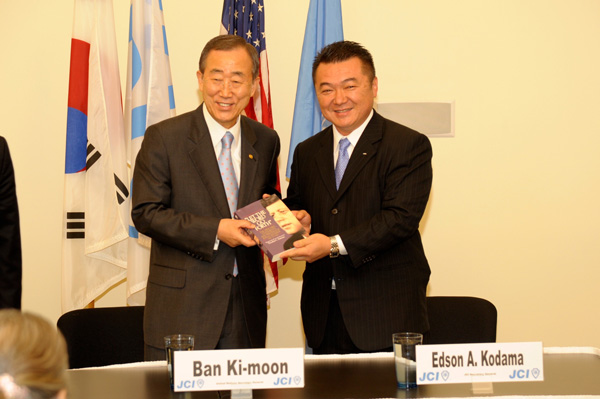 UN Secretary-General Ban Ki-moon when he visited JCI World Headquarters in Chesterfield, St. Louis, MO.
UN Secretary-General Ban Ki-moon when he visited JCI World Headquarters in Chesterfield, St. Louis, MO.
On the same line, we have built relationships with key people in the government health sector who have the ability to engage and help in these activities. The goal would be to start such activities at local schools to create awareness on the importance of hand hygiene among children. I like the phrase: “Nobody knows about the future, but we know who owns it.” This is a reality no one can change. All the actions we take today will be for those who are coming after us. When it comes to our planet, a Native American proverb teaches us that “we do not inherit the land from our ancestors, we borrow it from our children.” The commitment with the SDGs represents the ultimate test of humanity's conscience, as it is translated to the willingness to sacrifice something today for future generations whose words of thanks we may not hear. But we all know in our conscience that it is the right thing to do.
We hope we can make people in Mexico connect the name SARAYA to Hand Hygiene.
Please give your message to the next generation.
I believe that ... "If you share your dream with passion and you aim for good, good people will cross your path."
So, be positive, be proactive, embrace failure and learn from it, do not be shy to ask for help and focus on what you believe. The coronavirus pandemic showed us what the important things really matter to us all. It showed us that we should work together to overcome the challenges ahead, so do work in teams, be a good team player.
The partnership allows each one of us to bring their best to the table and allows ordinary people and partner companies to perform better than they seem capable of. It brings out each other’s strength, helps us all achieve extraordinary results.
So, how do we measure if we are doing right?
You take a note on the number of smiles you manage to put on people's faces as a result of what you do.
The number of people who come to you to thank you for what you have done.
That's what matters…that's how you know you are doing good.
Improving the sanitation, the environment, and health of the world.
Social

© Copyright Saraya.Co.Ltd 2024 All rights reserved.